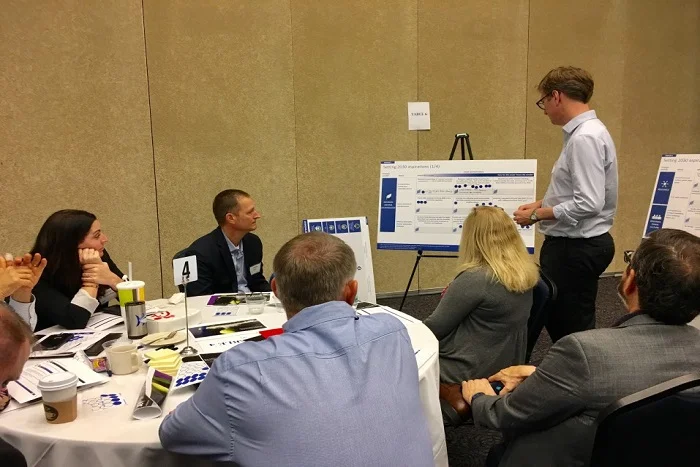This blog presents an Image Consultant’s views on the topic. To explore hiring and Image Consultant or to become one attend a free workshop and understand the complete framework of Image Management and also get do it yourself tips on managing your Image in terms of appearance, behaviour, communication and digital foot print.

From entrance tests to group discussions and interviews, the process of applying, getting selected and joining a company is like a game or sport, depending on which aspect we look at.
Entrance tests are a sprint on the track. You begin your preparation long before the test date. You prepare yourself academically and mentally for the big day. When the gun goes off or the bell rings, you set off down the track that is, the test. Then it is between you and the test, nothing else comes into the picture. The result depends on how good your preparation was and your state of mind on the test day.
Interviews are like a game of golf. You take a swing and hope you haven’t chucked the ball into a water hole or sand trap. You can ruin your chances as much by giving too much information as by giving too little. Excess information can take the interview along the wrong track and before you know it you are defending yourself and find it impossible to get out of the sand trap. Interviews are anything but a straightforward sprint. They involve finding your way sometimes with care and sometimes with all the intensity and power you have, depending on the lay of the land that is, the interviewer’s questions.
But, come to group discussions (GD) and you are in a real skirmish – a game of rough American Football. When you have the ball in hand, eleven players pounce to stop you from crossing the goal line or simply to grab the ball from you. Before you realize it, you are gasping for breath, wondering where you have lost the ball.
As each sport and game has its own rules-of-play and tips to help you navigate it successfully, the same goes for group discussions too. The general tip is that you follow the rules, gauge your opponents’ strengths and weaknesses, work around their strengths, tap into their weaknesses and you can sail through with the perfect image in group discussions.
Rule 1: Prepare
Work begins long before you sit for the group discussion. Your performance is as good as your preparation. Half the preparation is about knowledge. If you think you can wing it with aggression, you are mistaken. Find out the kind of topics that are given at the institution or company you are applying for.
Prepare well in time with as many topics as you can, not just the ones given in the past, but related ones too. You never know when the subject would be changed. Make a habit of active reading. It’s different from passive reading. Passive reading is where you read merely to understand the subject. Active reading is where you not only understand the subject, but also begin to raise questions and voice your opinion – positive, negative or neutral about the subject. This is critical in the group discussion to counter or support others’ points of view.
The next part of rule 1 is to have mock GDs, preferably with differing groups of friends. The point is to train your mind to think of any given topic’s pros and cons in a dynamic situation where you can’t predict the person’s response. More importantly, it is about looking at all the possible angles to the topic. This shows your logical mind, creativity and also your ability to think on your feet which comes with preparation.
Rule 2: Know the Participants
Carry a notepad and pen to note down your discussion points as soon as the topic is given. Most people who attend GDs are as focused on their performance as you tend to be. Take a deep breath and when the team introduces itself, note down the participants’ names. In the heat of the discussion, calling out the person’s name is a good way to get his attention. All of us respond instinctively when our name is called out, so use this technique. Not only does it get you their attention, it also shows your people skills and presence of mind.
Rule 3: Take Care of your Posture
Your body posture reveals your state of mind. At the same time, it conditions you to a particular way of thinking. Lean back and relax and you will be relaxing the intensity you need in a GD. Lean forward aggressively and there will be a lot of aggression in your tone and posture, causing others to mirror your image and make things more difficult than they can be. Find the balance.
Let your body posture be of polite intensity so that you come across as a balanced individual with plenty of energy. This also shows empathy and respect to others when they speak and is an asset that brings you additional points.
Rule 4: Take Charge
Take charge of the discussion right at the beginning. It shows your leadership capability. Introduce the topic by setting the framework for the ensuing discussion and state your opening point before leaving it to the group. Further, when it comes to conclusions, many GDs fall through and participants don’t make good use of it although it brings points. Conclude the discussion by summing up if you can. To do this, listen actively throughout the discussion and note down the key highlights – say, in columns of negative and positive points on your notepad or any other format that suits the discussion.
Rule 5: Retain Your Balance
During the discussion itself, give your logical counterpoint without aggression when there is a disagreement. You are not there to prove that your stand is right, but to show your maturity and logical thinking. When the discussion drags over a point, it is time for you to interject and turn the discussion in a new direction, either with a related point or with an opposite view.
Be to the point and intervene when another candidate is taking all the airtime. When he pauses for breath is a good time to take your chance, state your point and then, pass the chance to someone who hasn’t had his say. Through this, you show your no-nonsense nature while remaining empathetic.
Rule 6: Follow the Company Culture
Companies have a culture of their own. Some are highly aggressive, others less so. This factor reflects in their objectives for the candidates they recruit. Aggressive companies would expect you to stand for yourself in an aggressive environment. Companies with a more empathetic culture would look askance at it. Know the company culture beforehand. In either case, look out for yourself. But, don’t take all the airtime. You will look immature and self-centered.
Rule 7: Follow your Domain
Each department within the company is likely to have a culture of its own. Human Resources is one of the most approachable ones by the very nature of its domain; sales is likely to be aggressive; marketing, a combination of the creative and the operational while being people-oriented since it has to bring sales and finance functions over the same platform and so on. Keep the domain in mind while projecting your image. Let’s suppose you are facing a group discussion for a sales function, you may have to take a more aggressive approach whereas a marketing function could veer towards the creative and the practical approach in assessment.
Group discussions are as much about your knowledge and point-of-view as about how you handle yourself and others. Do these right and you will have projected the right image.
